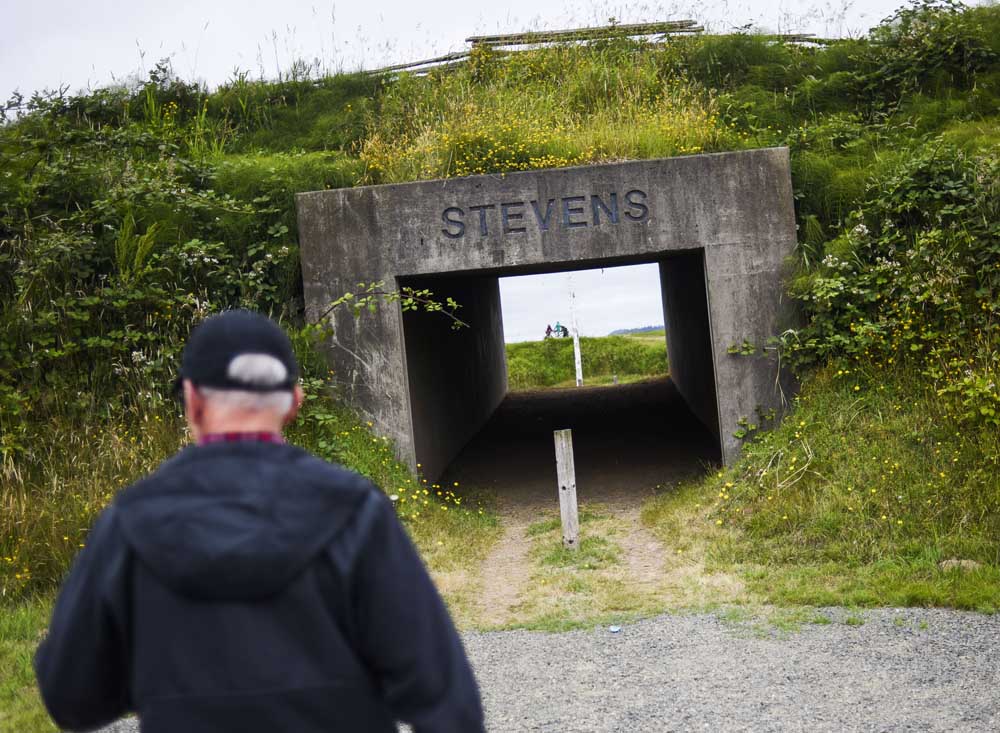Every fort needs a few good friends
Published 6:21 am Friday, July 1, 2016

- Friends of Old Fort Stevens Secretary David Lindstrom tours Fort Stevens State Park historic area Thursday. The Friends of Old Fort Stevens group works to preserve and restore parts of the park.
WARRENTON — Walking through the historical area of Fort Stevens State Park transports visitors back to when the military fort was active during the Civil War and World War II.
A restored Civil War earthen fort illustrates how the fort was originally built with dirt and surrounded by a moat with a drawbridge. The fort was used to protect against a possible British attack toward the end of the Civil War.
A row of artillery gun batteries allows visitors to envision the fort’s only action in World War II, when a Japanese submarine fired shells near the fort in June 1942.
To help share the local history, the nonprofit group Friends of Old Fort Stevens continues to plan renovation projects around the fort. The group collects funds by selling firewood and items in the military museum store.
“These guys fill a wonderful niche here. I applaud the Friends for all the work they have done over the years,” park ranger John Koch said. “It’s been incredibly beneficial for the park.”
The group has its sights set on upgrades to a flagpole in the Civil War earthen fort and multiple repairs to Battery Pratt, a gun emplacement facing the Columbia River.
An attraction of Battery Pratt is a remade artillery rifle, which was scrapped by the Army years ago. The full-scale replica was designed and built by Friends of Old Fort Stevens member Jack Buckmeir, who recently died.
David Lindstrom, secretary and treasurer for the nonprofit group, said all the members are impressed with Buckmeir’s work, and are disappointed he is no longer around to finish other projects in Battery Pratt.
“Literally out of scrap steel and being able to use line drawings, he was able to come up with the right dimensions and came up with this,” Lindstrom said of the replica gun. “This is Jack’s masterpiece.”
Inside Battery Pratt, soldiers used a hand-cranked elevator to bring shells up to the rifle. One area was designated as the plotting room, where soldiers used maps to calculate where the guns should point and when they should fire.
“It sounds primitive, but it worked,” Lindstrom said.
The group received a plotting table for the room this week, costing about $1,200. The group hopes to use another $2,000 to $3,000 to fully rebuild the plotting room.
At a meeting Wednesday, the group agreed to spend $4,000 on historically accurate steel doors for Battery Pratt.
Restoring historical pieces is ongoing work for the group, Lindstrom said.
“It’s always a scramble,” he said. “The instruments we need to replicate, we are still figuring out exactly what they looked like.”
For the Civil War earthen fort, the Friends allocated $2,000 this week for a new 75-foot flagpole. It will be large enough to hoist a 30-foot American flag that is being stored in a duffel bag at the park.
“We fly a very small flag now, but it’s not the type that was there originally,” Lindstrom said.
The Friends’ work is seen all around the historical area of the park. From new gravel walkways to new historical pieces, the group is constantly adding to the fort.
Some projects are too expensive or too cumbersome, having to get the approval of the U.S. Army Corps of Engineers and the National Register of Historic Places.
Overall, the state park sees the partnership with the Friends as valuable.
The Friends are all volunteers except two paid staff positions who manage the military museum.
Having the group staff the museum takes pressure off the state park, which is not always budgeted to operate the museum.
Koch said the group’s efforts create a well-rounded experience for park visitors.
“We are very thankful they are able to help us in the way they do,” Koch said.
Each weekend this summer, the Friends are busy hosting living history events leading up to the 26th annual Civil War re-enactment in September. The living history events are another way the group tells the story of the fort.
“It’s one of the more important things we do here,” Lindstrom said.

